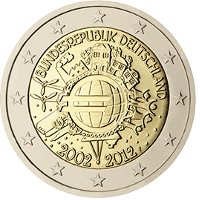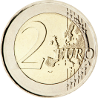 |
C o m m e m o r a t i v e C o i n s |
||
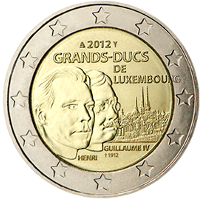 🔎
🔎 |
 |
Luxembourg | 30 Jan. 2012 | 100 years since the death of William IV, Grand Duke of Luxembourg 9th coin of the Grand-Ducal Dynasty series |
20001 20002 20005 |
722,500 |  |
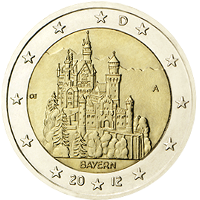 🔎
🔎 |
 |
Germany | 03 Feb. 2012 | Bavaria (Neuschwanstein Castle) 7th coin in the Federal States series |
20001 20002 20005 |
30,883,000 |  |
‐ ‐ The coin motif for Bavaria was originally intended to be the Munich Frauenkirche ("Cathedral of our Dear Lady"). |
|||||||
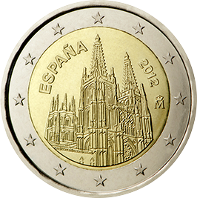 🔎
🔎 |
 |
Spain | 01 Mar. 2012 | Burgos Cathedral 3rd coin in the UNESCO World Heritage Sites series |
20001 20002 20005 |
4,000,000 |  |
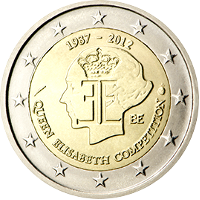 🔎
🔎 |
 |
Belgium | 06 Jun. 2012 | 75th anniversary of the Queen Elisabeth Music Competition |
20001 20002 20005 |
5,013,000 |  |
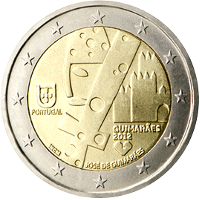 🔎
🔎 |
 |
Portugal | 21 Jun. 2012 | Guimaräes, European Capital of Culture 2012 |
20001 20002 20005 |
520,000 |  |
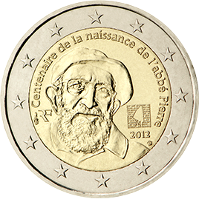 🔎
🔎 |
 |
France | 24 Jun. 2012 | 100th birthday of Abbé Pierre |
20001 20002 20005 |
1,020,000 |  |
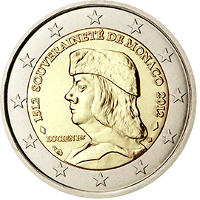 🔎
🔎 |
 |
Monaco | 28 Jun. 2012 | 500th anniversary of the establishment of Monaco’s sovereignty by Lucien I Grimaldi |
20001 20002 20005 |
110,000 |  |
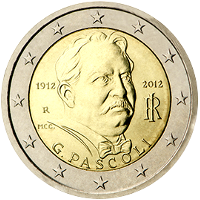 🔎
🔎 |
 |
Italy | 18 Jul. 2012 | 100th anniversary of the death of Giovanni Pascoli |
20001 20002 20005 |
15,000,000 |  |
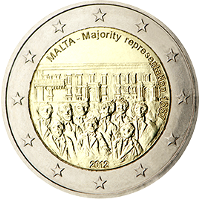 🔎
🔎 |
 |
Malta | 20 Aug. 2012 | 1887 Majority Representation 2nd coin of the Constitutional History series |
20001 20002 20005 |
405,000 |  |
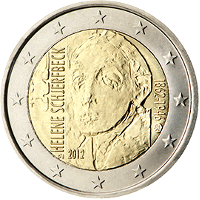 🔎
🔎 |
 |
Finland | 05 Oct. 2012 | 150th birthday of Helene Schjerfbeck |
20001 20002 20005 |
2,000,000 |  |
 🔎
🔎 |
 |
Vatican City | 16 Oct. 2012 | 7th World Meeting of Families ‐ Milan 2012 |
20001 20002 20005 |
103,000 |  |
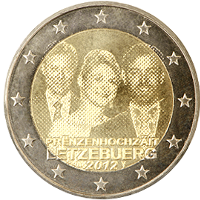 🔎
🔎 |
 |
Luxembourg | 20 Dec. 2012 | Royal Wedding of Guillaume, Hereditary Grand Duke of Luxembourg to Countess Stéphanie de Lannoy 10th coin of the Grand-Ducal Dynasty series |
20001 20002 20005 |
512,000 |  |
| ⇓ 2013 ⇓ |
| References : | |||
| 20001 | Images taken with authorisation by the ECB - Mail dated 20.Feb.2020 © "European Central Bank" |
20002 | Data mirrored from Wikipedia Page "2_euro_commemorative_coins" with friendly support of the guardians of that page. |
| 20003 | Not Applicable | 20004 | Coloured version of this Commemorative Coin in circulation EU-legal-technical specifications do not recongnise colour prints, but the EU is tolerate them, due to the facts that their numbers are very small and that they are sold in special packs and therefor are very unlikely to be used as currency. |
| 20005 | enlarged Images taken with authorisation by Gerd Seyffert © "Gerd Seyffert 2021" |
20006 | Not Applicable |
 |
